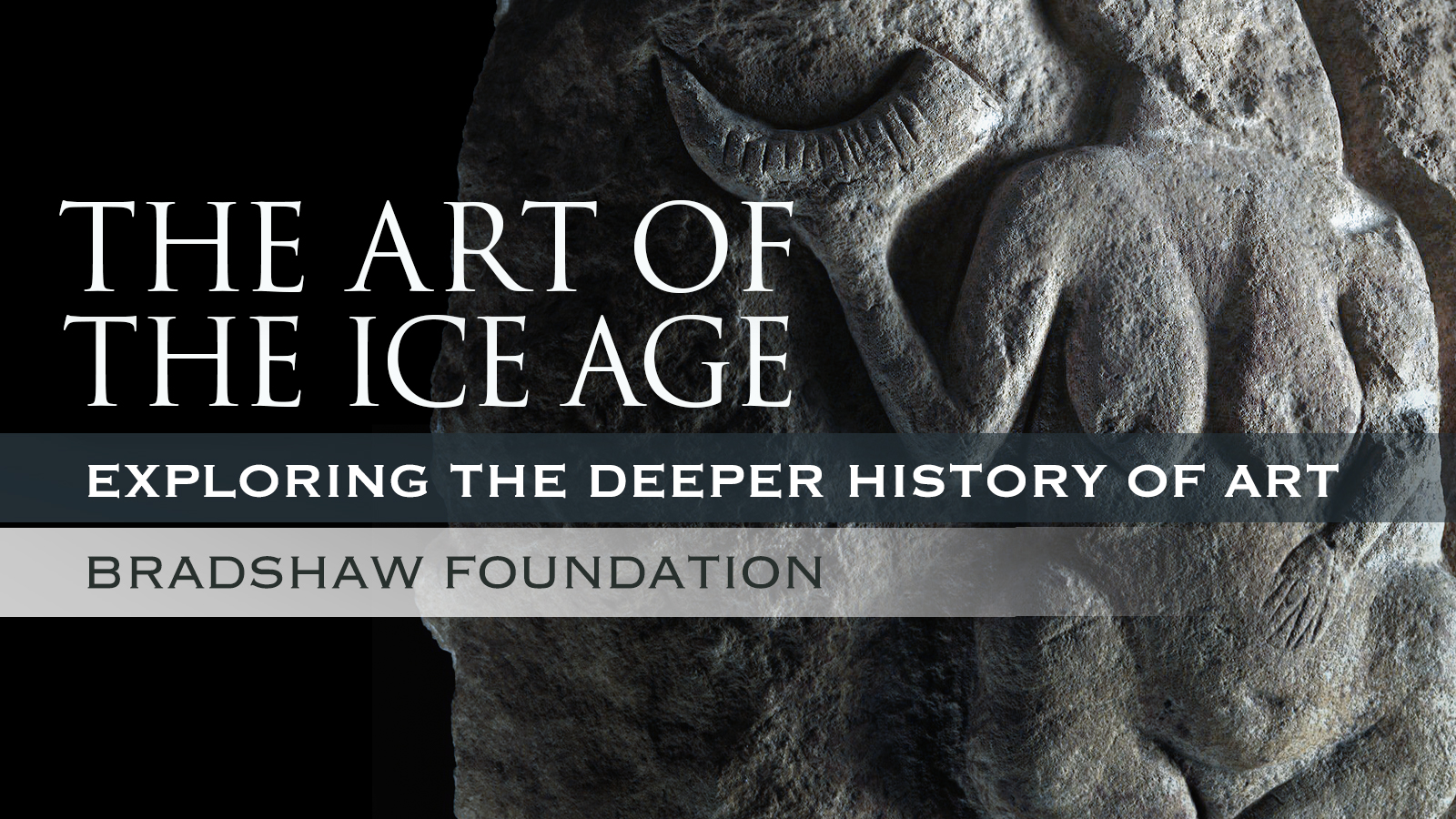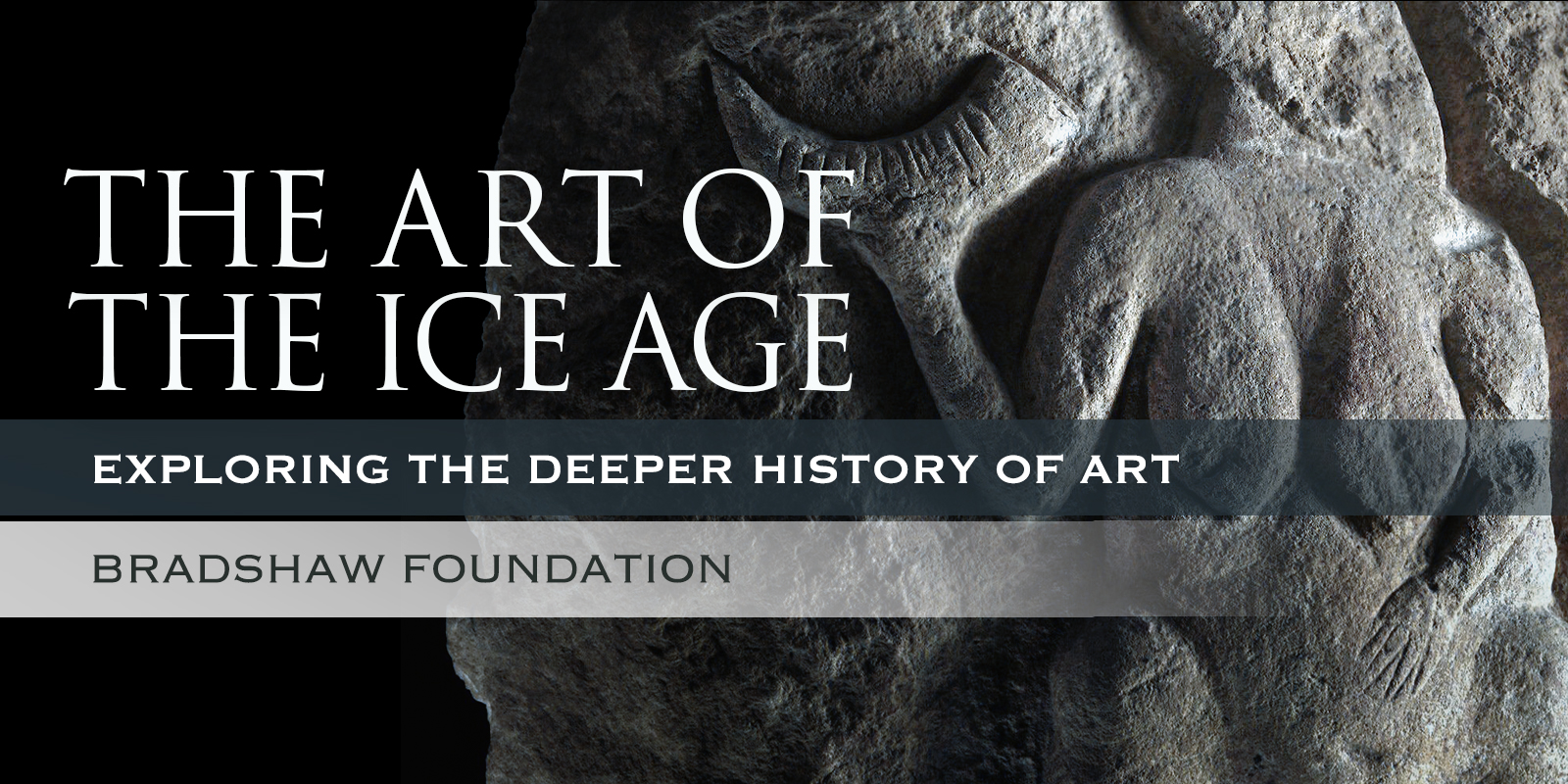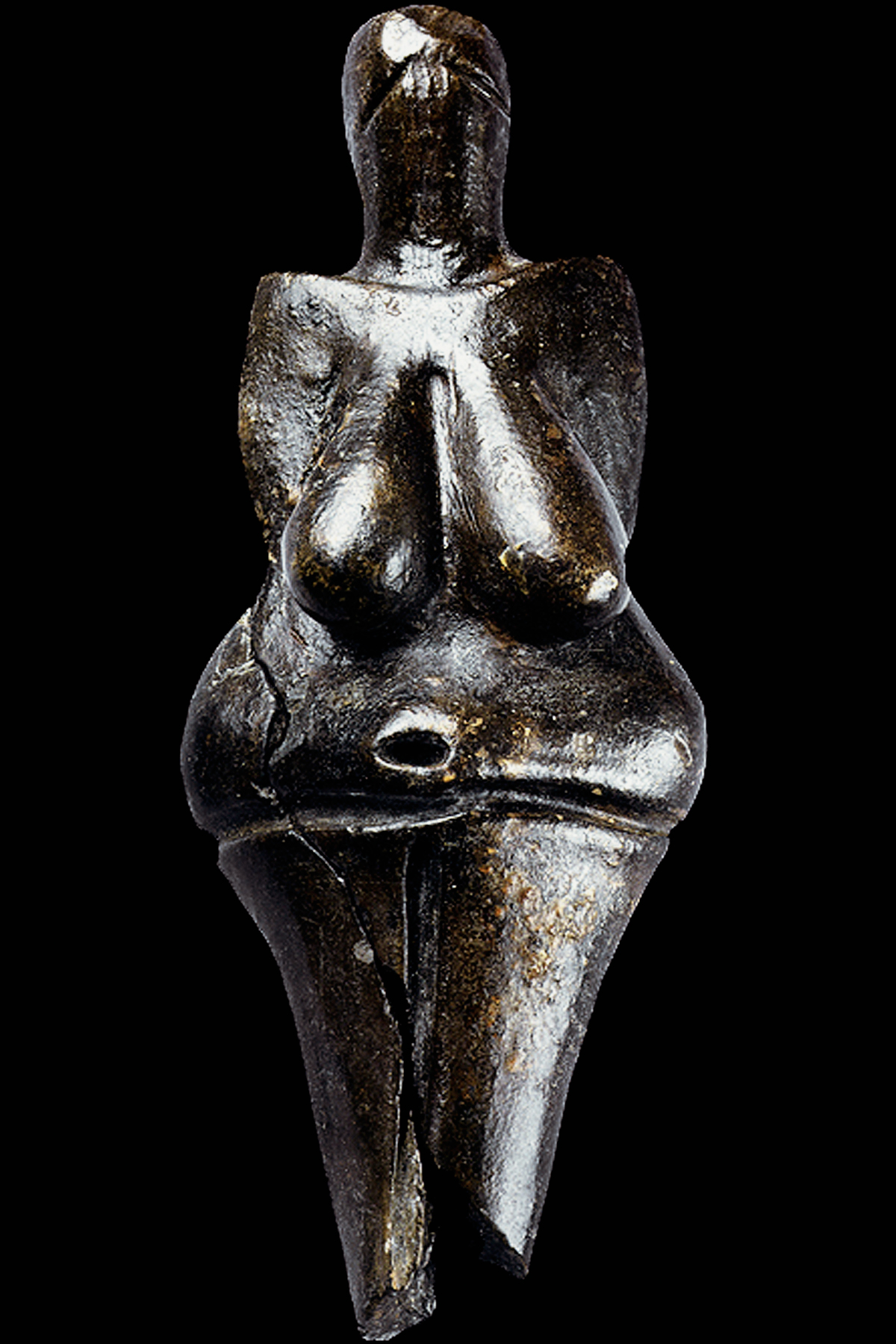Made of baked clay this extraordinary female figurine is justifiably famous. Her cylindrical head is unmarked except for a group of four small depressions on the top and two diagonal slits on the face. The significance of the depressions is unknown. They might have held decorative stones or bits of grass or feathers to indicate hair or an ornamental headdress. The slits suggest eye holes in some sort of veil or hood covering the face and neck above the clearly modelled collar bones. The upper arms curve round from the shoulders and end at the bottom the pendulous breasts. The hips curve out from the waist giving the figure a distinct pear shape but the line is broken by a deep incision which extends right round the figure under the stomach and buttocks. The sexual triangle is not shown and four deep, slightly inclined incisions in two pairs on each side of the spine on the back above the waist. The legs taper to a point. Does the covered face have a special meaning?
Dolní Vestonice, Moravia, Czech Republic.
Brno Museum, Czech Republic.
Dimensions
Gravettian
Culture taking its name from the La Gravette site, Dordogne, France, and lasted from about 28,000 years ago until 22,000 years ago. Original elements in Gravettian cave art include the use of hand stencils, and the type of female statuette widely but incorrectly known as 'Venus' first appear in the portable art of this period.
Source: Dr Jean Clottes



